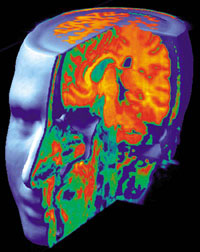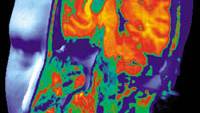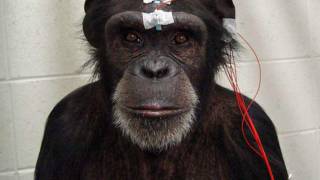Quest for the connectome: scientists investigate ways of mapping the brain
Source: guardian.co.uk
Researchers have a goal so ambitious it is almost unthinkable – learning how all 85bn neurons in the human brain are wired up There is a macabre brilliance to the machine in Jeff Lichtman’s laboratory at Harvard University that is worthy of a Wallace and Gromit film. In one end goes brain. Out the other comes sliced brain, courtesy of an automated arm that wields a diamond knife. The slivers of tissue drop one after another on to a conveyor belt that zips along with the merry whirr of a cine projector.
There is a macabre brilliance to the machine in Jeff Lichtman’s laboratory at Harvard University that is worthy of a Wallace and Gromit film. In one end goes brain. Out the other comes sliced brain, courtesy of an automated arm that wields a diamond knife. The slivers of tissue drop one after another on to a conveyor belt that zips along with the merry whirr of a cine projector.Lichtman’s machine is an automated tape-collecting lathe ultramicrotome (Atlum), which, according to the neuroscientist, is the tool of choice for this line of work. It produces long strips of sticky tape with brain slices attached, all ready to be photographed through a powerful electron microscope.
When these pictures are combined into 3D images, they reveal the inner wiring of the organ, a tangled mass of nervous spaghetti. The research by Lichtman and his co-workers has a goal in mind that is so ambitious it is almost unthinkable.
Video from: YouTube.com
If we are ever to understand the brain in full, they say, we must know how every neuron inside is wired up.
Though fanciful, the payoff could be profound. Map out our "connectome" – following other major "ome" projects such as the genome and transcriptome – and we will lay bare the biological code of our personalities, memories, skills and susceptibilities. Somewhere in our brains is who we are.
To use an understatement heard often from scientists, the job at hand is not trivial. Lichtman’s machine slices brain tissue into exquisitely thin wafers. To turn a 1mm thick slice of brain into neural salami takes six days in a process that yields about 30,000 slices.
But chopping up the brain is the easy part. When Lichtman began this work several years ago, he calculated how long it might take to image every slice of a 1cm mouse brain. The answer was 7,000 years. "When you hear numbers like that, it does make your pulse quicken," Lichtman said.
The human brain is another story. There are 85bn neurons in the 1.4kg (3lbs) of flesh between our ears. Each has a cell body (grey matter) and long, thin extensions called dendrites and axons (white matter) that reach out and link to others. Most neurons have lots of dendrites that receive information from other nerve cells, and one axon that branches on to other cells and sends information out.
On average, each neuron forms 10,000 connections, through synapses with other nerve cells. Altogether, Lichtman estimates there are between 100tn and 1,000tn connections between neurons.
Unlike the lung, or the kidney, where the whole organ can be understood, more or less, by grasping the role of a handful of repeating physiological structures, the brain is made of thousands of specific types of brain cell that look and behave differently. Their names – Golgi, Betz, Renshaw, Purkinje – read like a roll call of the pioneers of neuroscience.
Lichtman, who is fond of calculations that expose the magnitude of the task he has taken on, once worked out how much computer memory would be needed to store a detailed human connectome.
"To map the human brain at the cellular level, we’re talking about 1m petabytes of information. Most people think that is more than the digital content of the world right now," he said. "I’d settle for a mouse brain, but we’re not even ready to do that. We’re still working on how to do one cubic millimetre."
He says he is about to submit a paper on mapping a minuscule volume of the mouse connectome and is working with a German company on building a multibeam microscope to speed up imaging.
For some scientists, mapping the human connectome down to the level of individual cells is verging on overkill. "If you want to study the rainforest, you don’t need to look at every leaf and every twig and measure its position and orientation. It’s too much detail," said Olaf Sporns, a neuroscientist at Indiana University, who coined the term "connectome" in 2005.
"It’s like trying to describe the Mona Lisa by fixing the positions of the atoms and molecules that make up the paint."
Instead of setting their sights on the distant goal of a complete human connectome, Sporns and other neuroscientists are focusing on what is achievable today: larger-scale maps of neural wiring. This summer, under the $40m (£25m) Human Connectome Project (HCP), they will begin to produce and study the most detailed wiring maps yet of the healthy human brain.
"Even at these larger scales, there’s an enormous amount we can learn about the brain," said Sporns.
The HCP has recruited 1,200 people, who will have up to five different brain scans in a two-day visit to Washington University in St Louis, Missouri. One draw for the volunteers is they are not required to have their brains sliced.
The volunteers are healthy young adults, aged 22-35, and include Hispanics, Asians, African Americans and white non-Hispanics. To help tease out genetic factors in brain organisation, the group is made up of 300 pairs of twins and their non-twin siblings, whose connectomes, behaviours and genetic makeup can all be compared.
Neuroscientists already have some idea of how brains are wired, but the variability between even healthy people is substantial. The cerebral cortex makes up 80% of the human brain, but holds only a fifth of its neurons.
Its familiar, wrinkled, cortical surface contains 150 or so areas that differ markedly in their size and connectivity. Tucked beneath the cerebral hemispheres, the cerebellar cortex occupies only a 10th of the brain’s volume but contains 80% of its neurons. Again, its lobes and lobules differ markedly from person to person.
The HCP brain scans will map the connectivity of participants’ brains to a level of around 1mm or 2mm. That is enough to see where nerves form thick bundles to carry lots of information quickly from one region to another.
The first detailed connectomes are expected to be completed, and made publicly available for scientists to work on, later this year. The maps will be anonymised to protect individuals’ identities. The scientists behind the HCP use different techniques to build a picture of two related aspects of the working brain.
The anatomical, or structural connectivity, reveals the large-scale wiring, akin to the motorways and A-roads that criss-cross the country. The other aspect, functional connectivity, shows which parts of the brain work in unison, when the brain is resting or performing a certain task. To this end, participants will be given memory tests, problems to solve, and asked to recognise emotions in faces, all while being scanned.
At Oxford University, Tim Behrens oversees how the HCP will use a technique called diffusion tractography to map the major connections in the brain. Based on magnetic resonance imaging – a staple of modern neuroscience – diffusion tractography measures how water diffuses through the brain.
The principle is straightforward. Left unobstructed, water molecules move around randomly at body temperature, going this way and that. But in the brain, water molecules move preferentially along the lines of nerve fibre bundles. Follow the water, and scientists can infer the positions of major tracts of nerves.
"It makes mistakes, it misses things, and it only goes down to around one cubic millimetre, but it can be done on a human brain without damaging it, and you can do the whole brain at once, and that makes a huge difference," Behrens said. "Instead of taking years and years to map one connection, it takes 40 minutes to do the whole thing."
Combining the brain maps with information on participants’ skills, personalities and genetic makeup could be extraordinarily useful.
[...]
Picked up from: zen-haven.dk






















